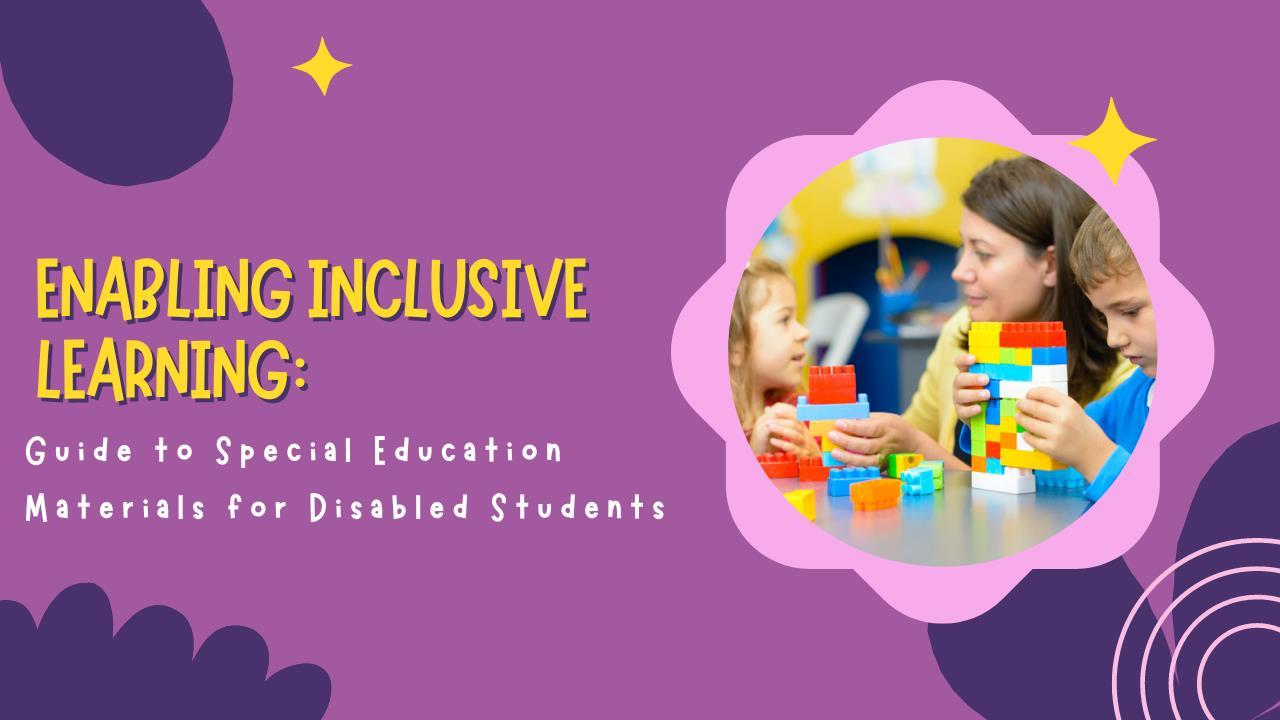GuidetoSpecialEducationMaterialsfor DisabledStudents

Introduction:
In the pursuit of inclusive education, the significance of Special Education Materials for disabled students cannot be overstated. These resources play a pivotal role in creating a supportive learning environment tailored to the diverse needs of students with disabilities. This comprehensive guide delves into the various types of Special Education Materials, their importance, and the positive impact they have on the educational journey of disabled students.
Understanding Special Education Materials:
Special Education Materials encompass a wide range of tools and resources designed to accommodate the unique learning requirements of students with disabilities. From adaptive technologies and assistive devices to modified teaching aids, these materials aim to bridge the gap and ensure that every student, regardless of their abilities, has equal access to quality education.
Types of Special Education Materials:
1. Adaptive Technologies: Adaptive technologies, such as screen readers, voice recognition software, and communication devices, empower students with disabilities to access and engage
with educational content. These tools break down barriers, allowing students to participate actively in the learning process.
2. Visual Aids and Tactile Materials: Visual aids, including charts, diagrams, and tactile materials, are instrumental in catering to various learning styles. For students with visual impairments or those who benefit from hands-on experiences, these materials enhance comprehension and retention of information.
3. Modified Texts and Curriculum: Modifying texts and curriculum content ensures that the material is presented in a way that is accessible to students with diverse learning needs. This may involve simplifying language, providing alternative formats, or offering additional support materials to facilitate understanding.
Importance of Special Education Materials:
1. Personalized Learning: Special Education Materials enable educators to personalize learning experiences, acknowledging and accommodating the individual strengths and challenges of each student. This personalized approach enhances engagement and promotes a positive attitude towards learning.
2. Accessible Education: Creating accessible educational content through special materials ensures that students with disabilities have an equal opportunity to access information. This inclusivity is essential for fostering a sense of belonging and preventing students from feeling excluded from the learning process.
3. Building Confidence: Special Education Materials contribute to building confidence in students with disabilities by providing the necessary support to navigate academic challenges. When students can actively participate and succeed in their learning journey, it has a profound impact on their self-esteem and belief in their abilities.
